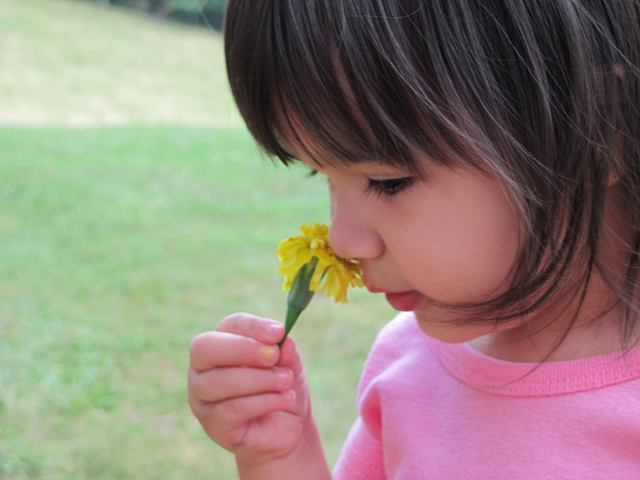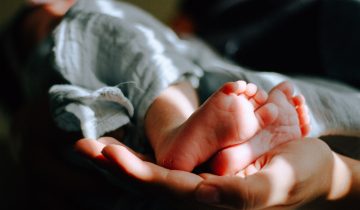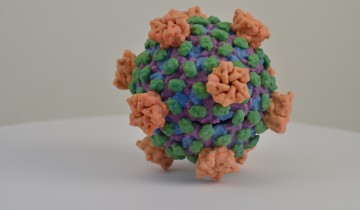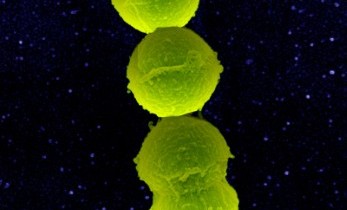Diagnosing autism spectrum disorder (ASD) is not easy — there is no specific test and, for a diagnosis, doctors rely on behavioral and developmental evaluations. According to the Centers for Disease Control and Prevention, ASD can sometimes be detected at 18 months or younger. By age 2, a diagnosis by an experienced professional can be considered very reliable. However, in most cases, diagnosis occurs around age 5, when kids start school. Researchers recently found that even if a parent notices problems making eye contact or other early signs of autism, some doctors still dismiss those concerns saying the child will “grow out of it”, thus delaying diagnosis and a child’s access to therapy.

Photo credit: Savannah Lewis, CC BY 2.0
Now, results from a new study (A Mechanistic Link between Olfaction and Autism Spectrum Disorder) published July 2, 2015, in the journal Current Biology , show that a sniff test might help detect ASD. This is why it works: “Imagine the way you might smell a rose. You’d take a nice big sniff to breathe in the sweet but subtle floral scent. Upon walking into a public restroom, you’d likely do just the opposite — abruptly limiting the flow of air through your nose. Autistic children go right on sniffing in the same way, no matter how pleasant or awful the scent.”
For the study, researchers exposed children to pleasant (rose or shampoo) and unpleasant (sour milk or rotten fish) odors. Then, the researchers measured their sniff responses. During the experiment — which lasted 10 minutes — children were watching a cartoon or playing a video game. Indeed, the sniff response is semi-automated: it does not require the subject’s attention. The study included 18 children with ASD and 18 normally developing children (17 boys and 1 girl in each group). The average age of children in the study was 7.
The researchers found that, while typical children adjusted their sniffing within 305 milliseconds of smelling an odor, children on the autism spectrum showed no such response. Although the researchers had not been told which children had autism, they were able to correctly diagnose ASD 81% of the time on the basis of the difference in sniff response. In addition, increasingly aberrant sniffing was associated with increasingly severe autism symptoms, based on social but not motor impairments.
Noam Sobel, senior author of the study, said in a press release: “We can identify autism and its severity with meaningful accuracy within less than 10 minutes using a test that is completely non-verbal and entails no task to follow. This raises the hope that these findings could form the base for development of a diagnostic tool that can be applied very early on, such as in toddlers only a few months old. Such early diagnosis would allow for more effective intervention.”
Although the findings suggest that a sniff test could be quite useful in the clinic, the researchers emphasize that their test is in no way ready for that yet. Liron Rozenkrantz, lead author of the study, told the BBC: “Before we can use it as a diagnostic test, we need to know at what age children start to develop a sniff response in the general population. Are you born with it? Do you develop it later in life? No-one has looked at it yet. I think what we have an interesting place to start, but we do have a way to go.”
In addition, Rozenkrantz told CNN that before it can be considered for early diagnosis, the sniff test should first be evaluated in young babies, and babies identified as being at risk of autism should be followed into childhood to see if they actually develop the disorder.
Despite the need for additional studies, the findings are valuable and offer hope for improved ASD diagnosis. Judith Brown, from the UK’s National Autistic Society, told The Independent: “Getting a diagnosis is a crucial step to unlocking vital support services which can make a huge difference to people on the autism spectrum and their families. We believe that the possibility of developing a single and universal diagnostic test for autism is unlikely. However, in the future, if these initial findings are confirmed and fully understood, differences relating to processing smell may offer an additional tool in the necessarily multi-faceted process of diagnosing autism.”



